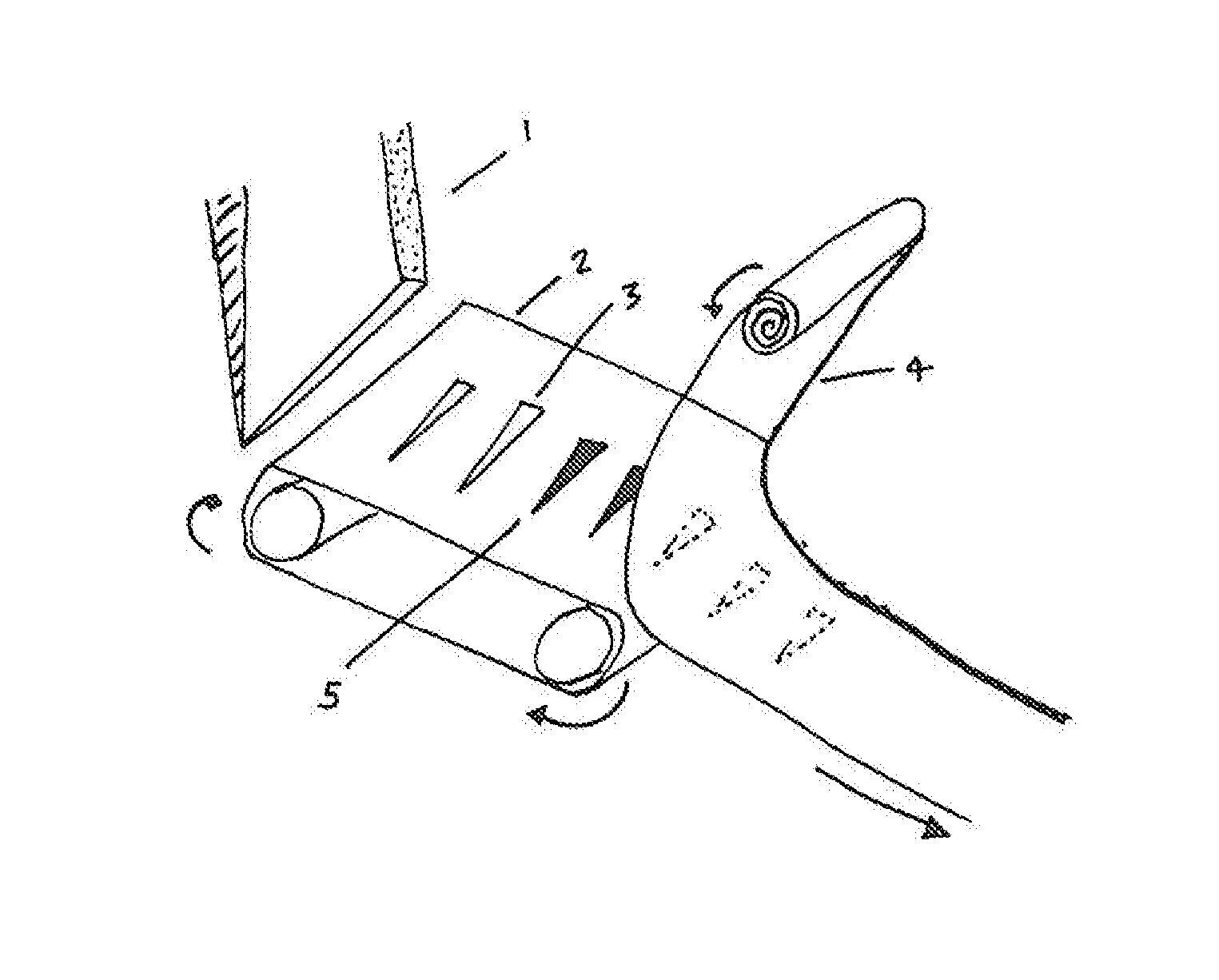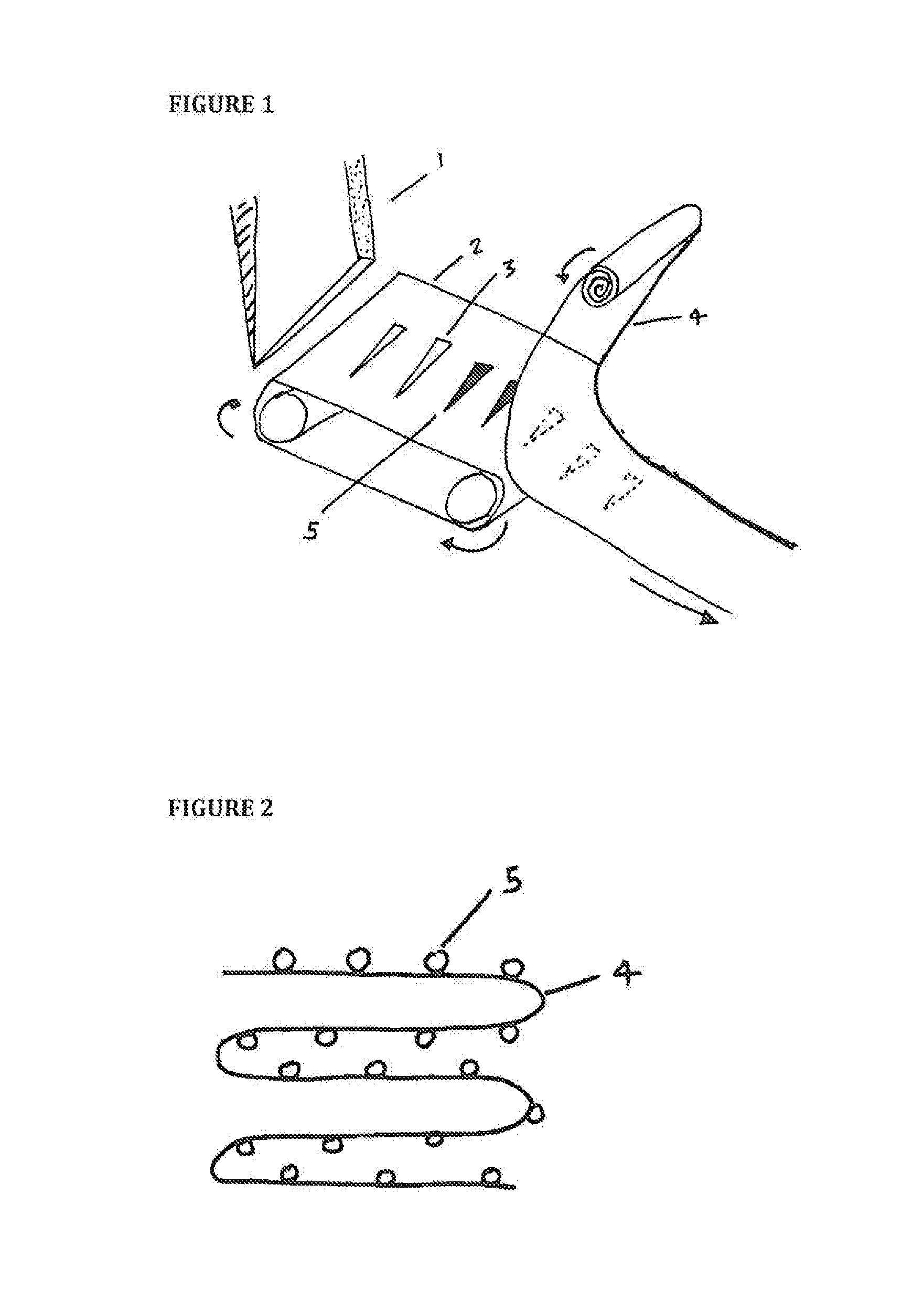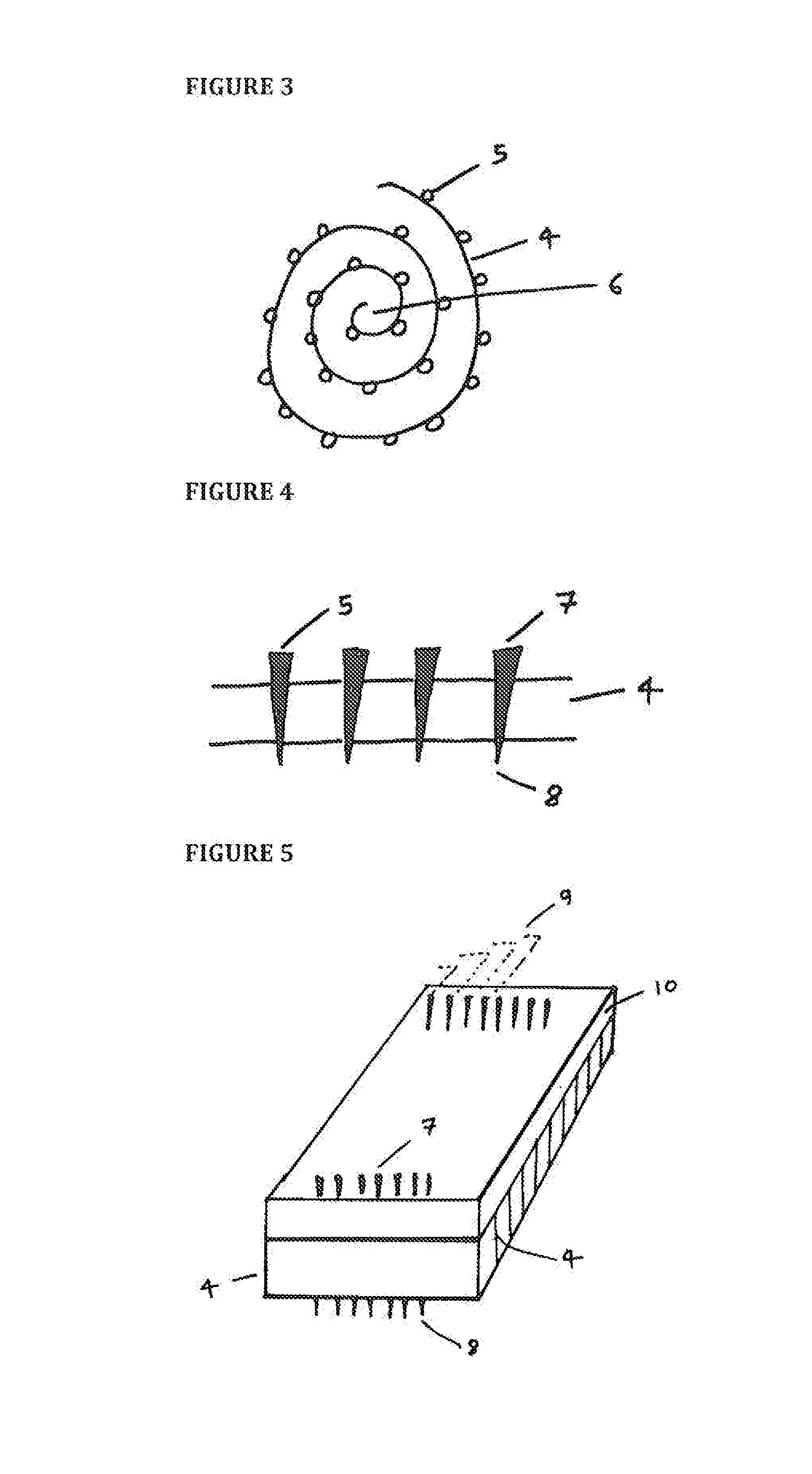Microneedle Device and Method of Preparation
- Summary
- Abstract
- Description
- Claims
- Application Information
AI Technical Summary
Benefits of technology
Problems solved by technology
Method used
Image
Examples
Example
[0021]Referring now to the drawings, FIG. 1 shows a hopper 1 as a source of microneedles designed to feed the needles 5 in a specific orientation, on to a belt 2 with grooves 3. A separate adhesive roll, or substrate 4, makes surface-contact, or near surface-contact, and as a result adheres the needles 5 to the adhesive substrate 4 (as shown by the dotted lines to denote needles 5 adhered to the underside of the adhesive substrate 4). The hopper 1 has an opening that supplies needles 5 which are uniform and / or tapered at both ends. The belt 2 has a plurality of grooves 3 or slots into which the needles 5 are placed. The belt 2 is formed from metal, plastic or rubber. The needles 5 are not required to fit tightly in the grooves 3. While the belt 2 is shown in a horizontal configuration, it may also be inclined laterally at an appropriate angle to allow the tips of the needles 5 to rest against an adjacent wall (not shown) under the influence of gravity. This allows a uniform height o...
PUM
| Property | Measurement | Unit |
|---|---|---|
| Width | aaaaa | aaaaa |
| Density | aaaaa | aaaaa |
| Adhesivity | aaaaa | aaaaa |
Abstract
Description
Claims
Application Information
 Login to View More
Login to View More - R&D
- Intellectual Property
- Life Sciences
- Materials
- Tech Scout
- Unparalleled Data Quality
- Higher Quality Content
- 60% Fewer Hallucinations
Browse by: Latest US Patents, China's latest patents, Technical Efficacy Thesaurus, Application Domain, Technology Topic, Popular Technical Reports.
© 2025 PatSnap. All rights reserved.Legal|Privacy policy|Modern Slavery Act Transparency Statement|Sitemap|About US| Contact US: help@patsnap.com



